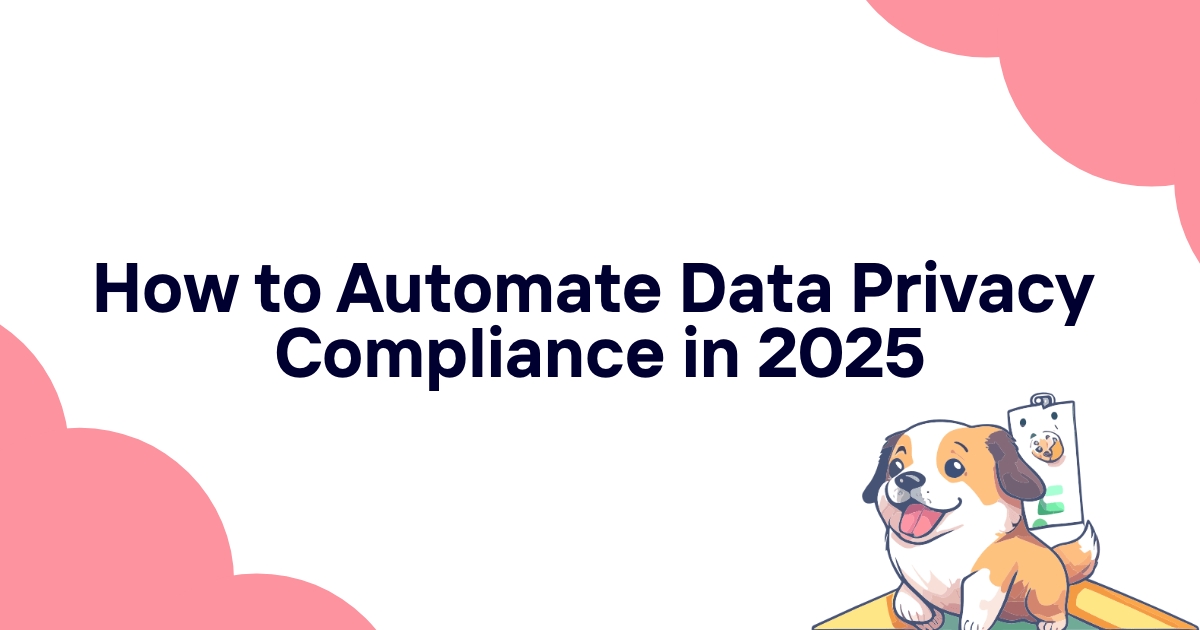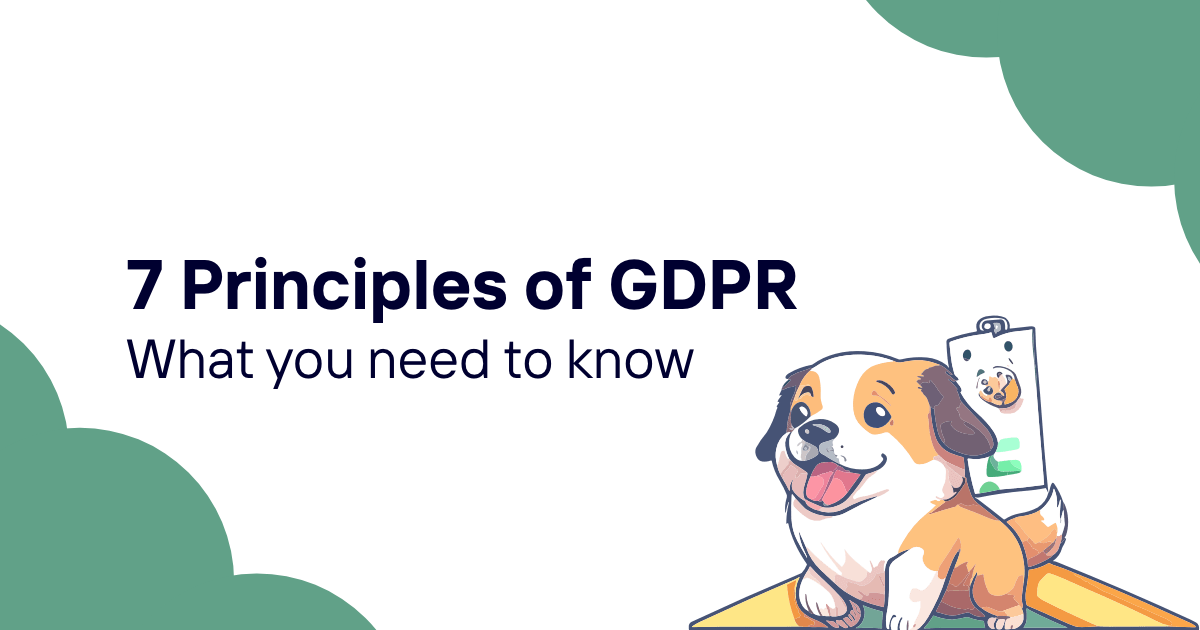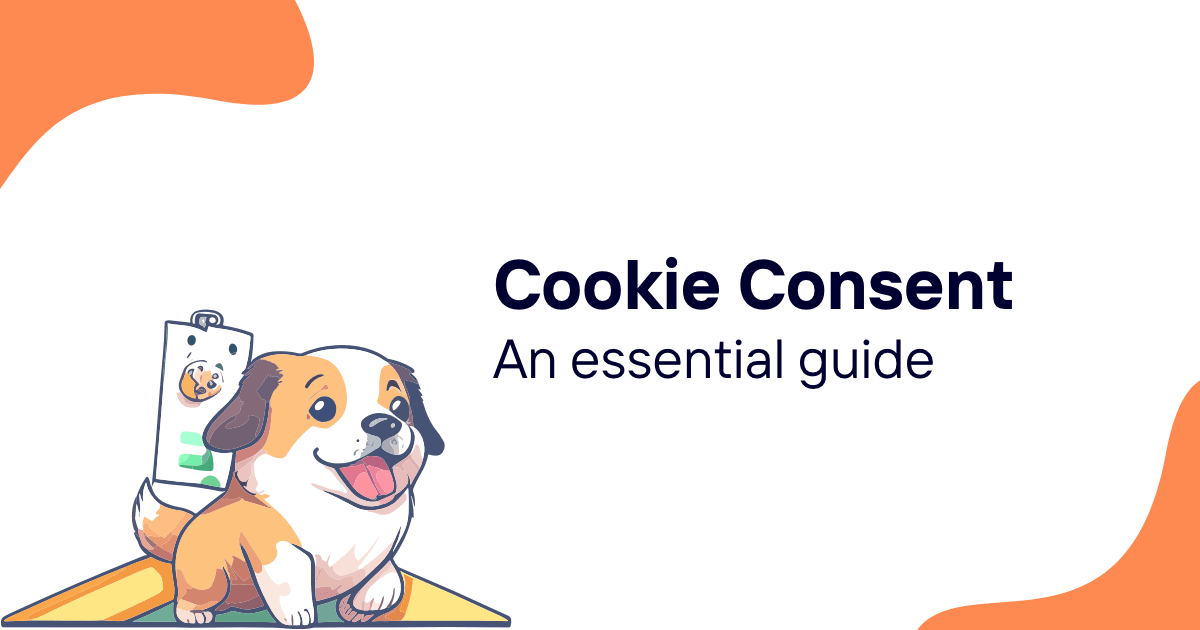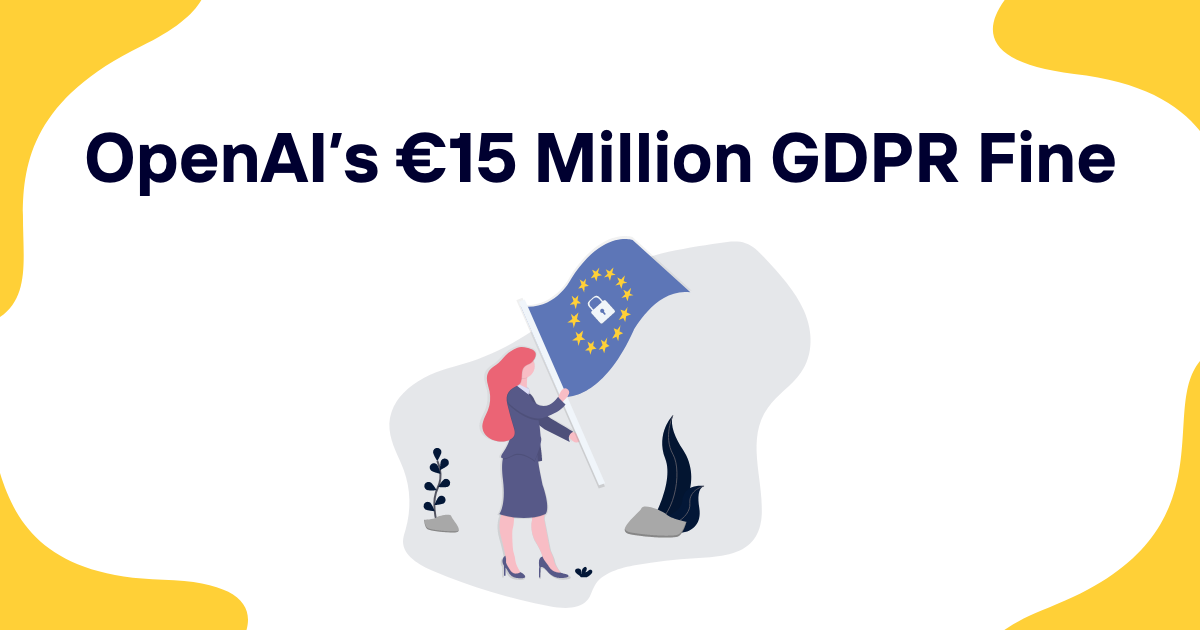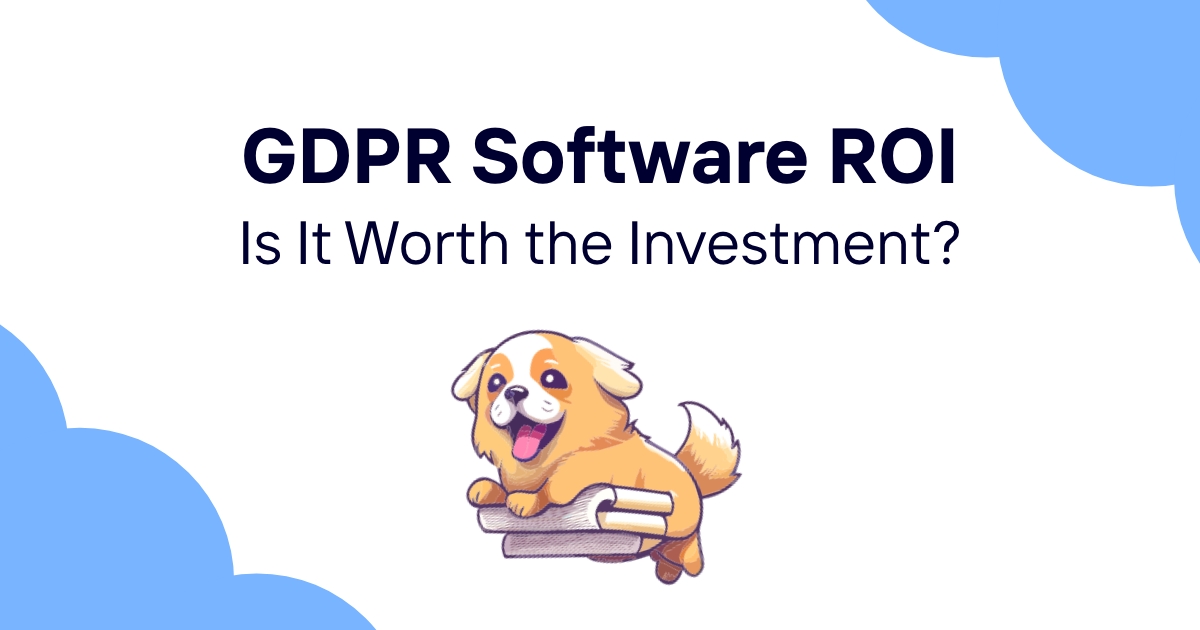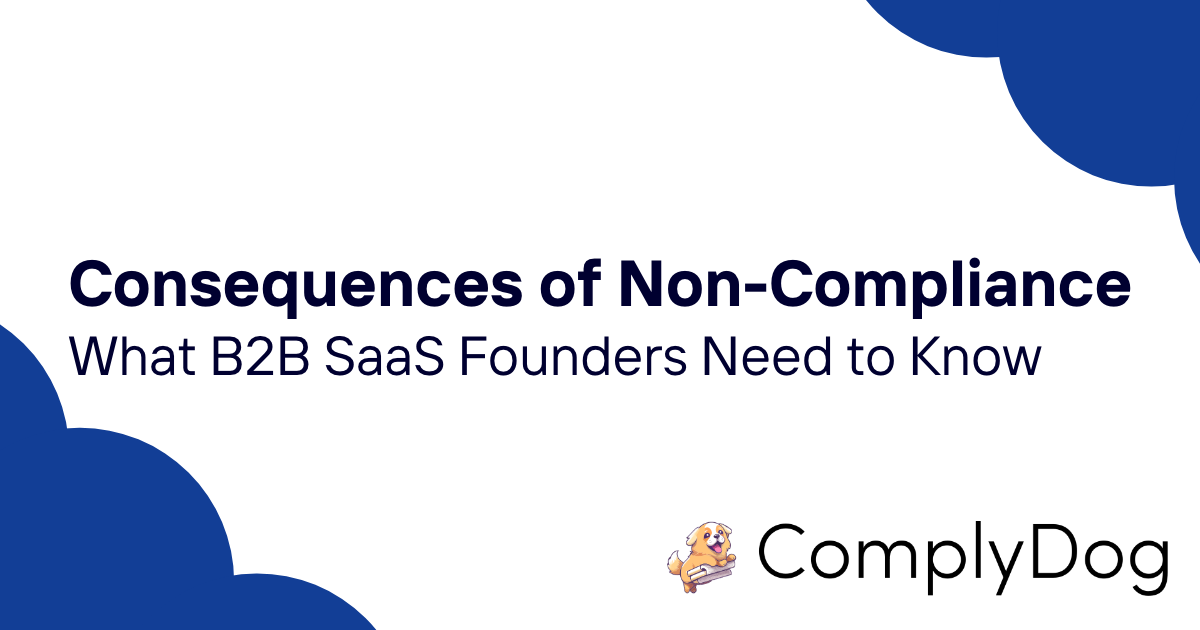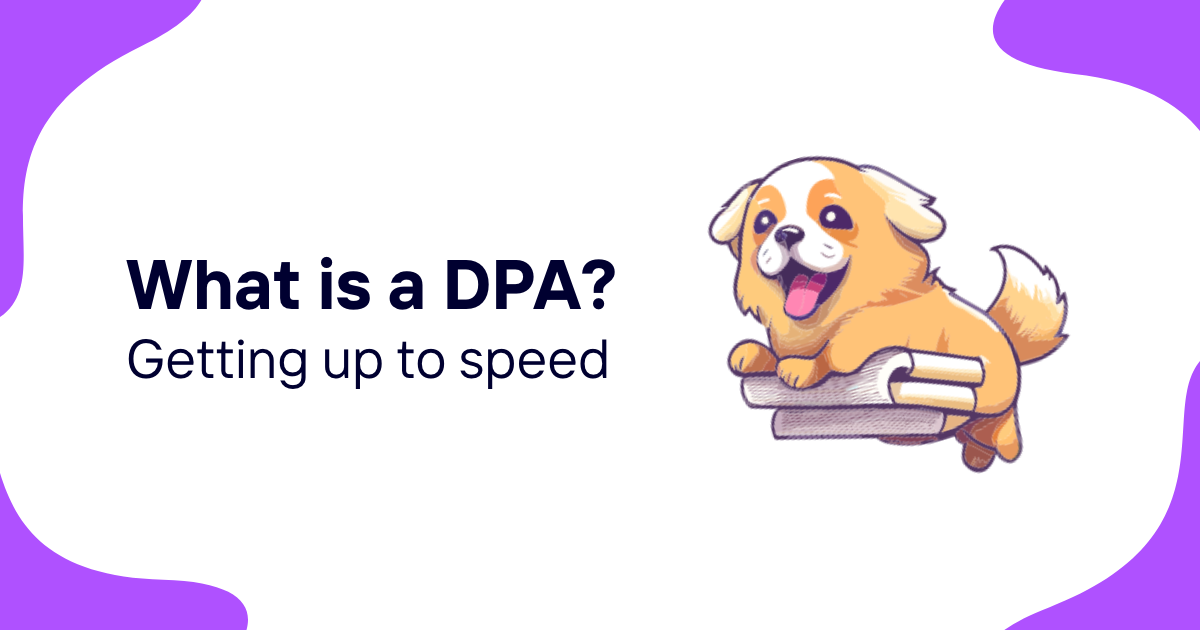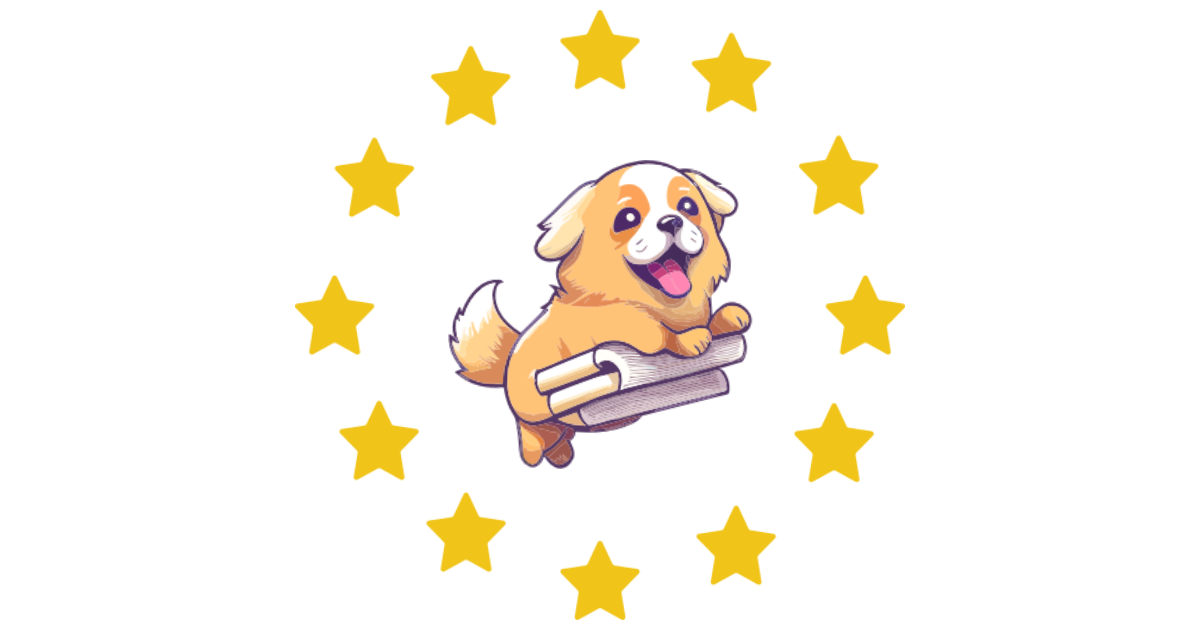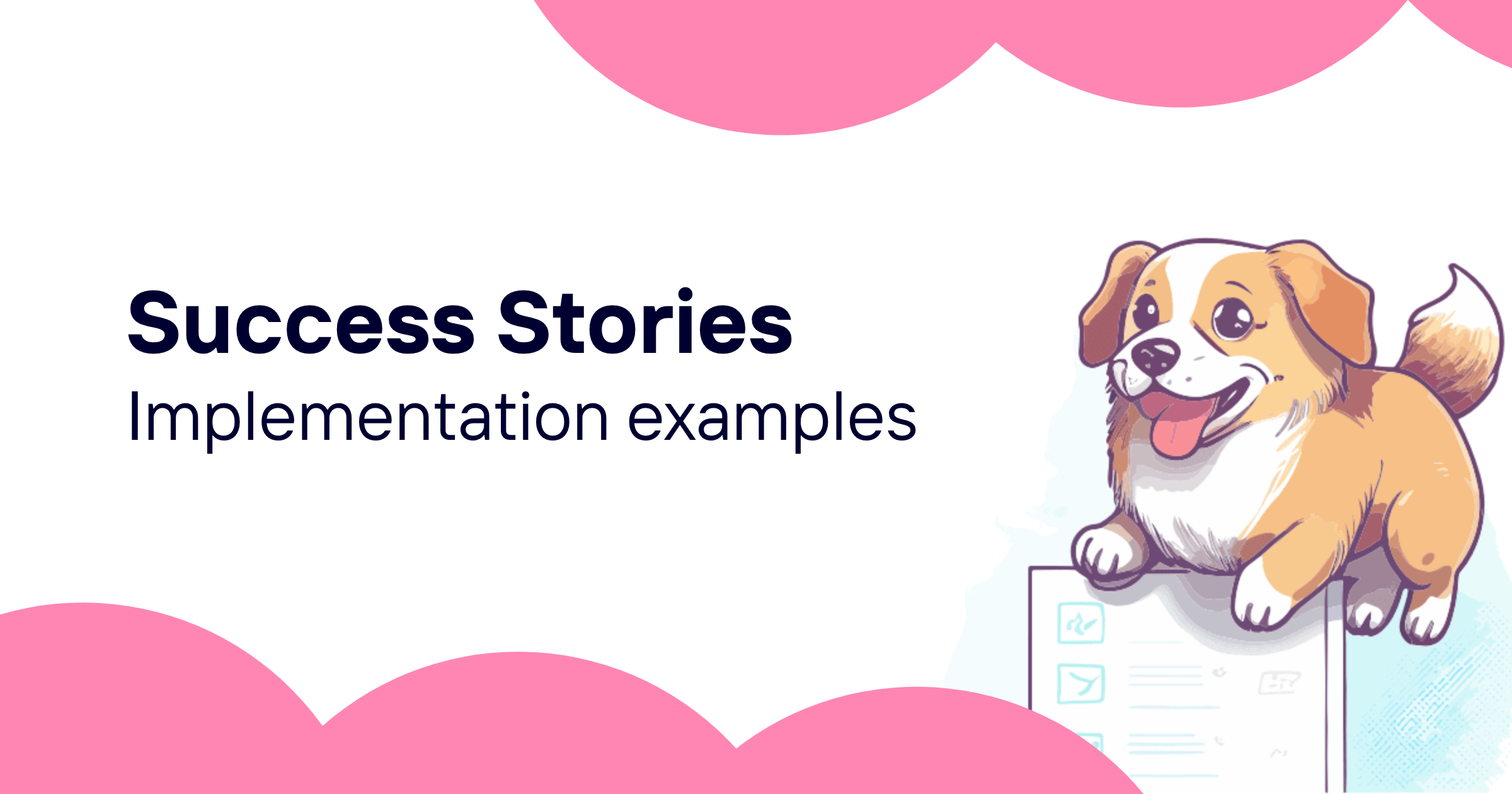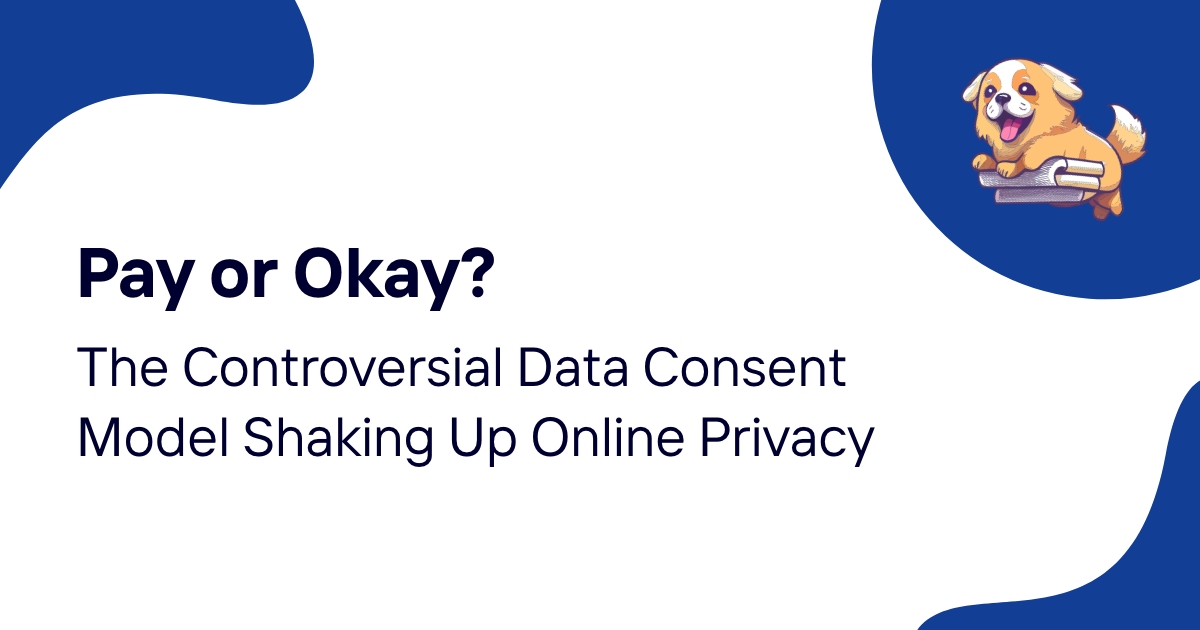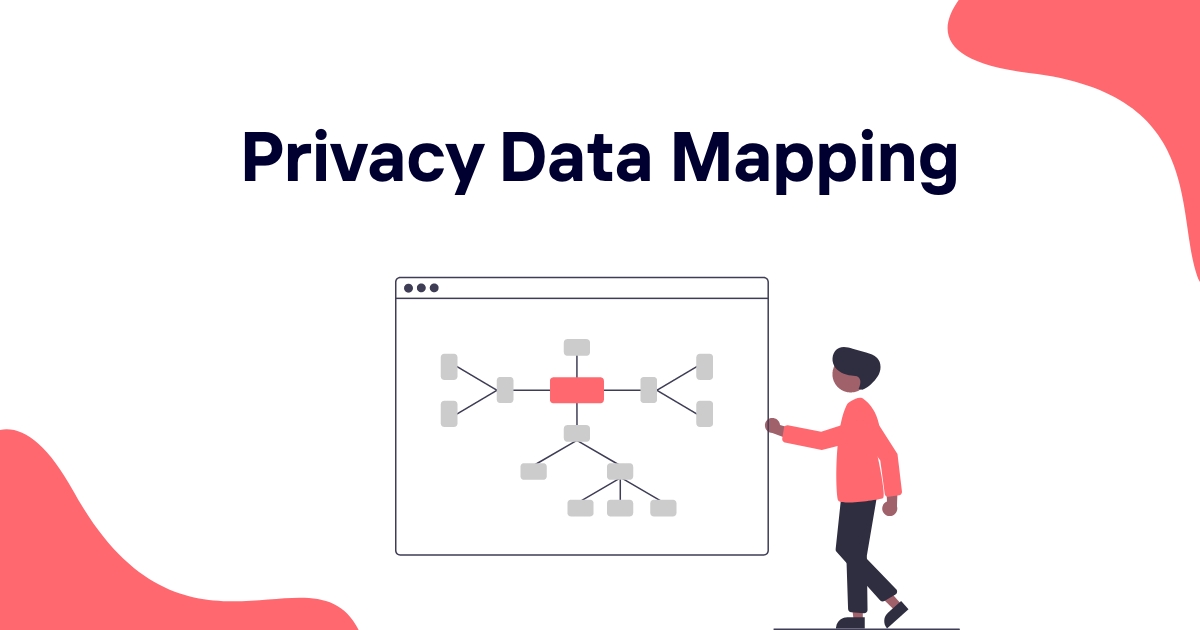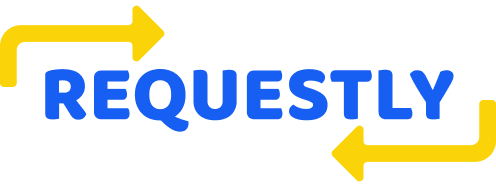Privacy compliance has become a nightmare that keeps executives awake at night. Companies scramble to keep up with regulations that multiply faster than rabbits in spring, each with its own peculiar requirements and hefty fines for non-compliance. The old approach of manual tracking and spreadsheet management? That ship has sailed.
Organizations now process billions of data points daily across cloud platforms, databases, and third-party integrations. Meanwhile, privacy laws continue sprouting up across jurisdictions with the enthusiasm of weeds after rain. The European Union's General Data Protection Regulation (GDPR) started this domino effect, followed by California's Consumer Privacy Act (CCPA), Virginia's Consumer Data Protection Act, and dozens of others.
But here's the thing that makes privacy professionals lose sleep: manual compliance management simply doesn't scale. Companies that still rely on human-driven processes to track personal data, manage consent, and respond to data subject requests are essentially playing Russian roulette with million-dollar regulatory penalties.
The solution? Automation that transforms privacy compliance from reactive firefighting into proactive risk management.
Table of contents
- What does automated data privacy compliance mean?
- The crushing weight of manual compliance management
- Core components of privacy automation systems
- Automated PII discovery across data ecosystems
- Policy automation and global control implementation
- Continuous monitoring and proactive auditing
- Cross-jurisdictional compliance coordination
- Technology architecture for privacy automation
- Implementation roadmap for compliance automation
- Measuring automation effectiveness
- Common pitfalls and how to avoid them
- Future-proofing your privacy automation strategy
What does automated data privacy compliance mean?
Automated data privacy compliance represents a fundamental shift from manual, reactive privacy management to intelligent, proactive data protection. Think of it as upgrading from a horse-drawn cart to a self-driving vehicle – both get you from point A to point B, but one requires constant human intervention while the other handles most of the heavy lifting automatically.
The automation approach involves deploying software systems that continuously scan data environments, identify personal information, apply appropriate protections, monitor access patterns, and generate compliance reports without requiring human intervention for routine tasks. These systems operate 24/7, processing thousands of compliance checks that would take privacy teams weeks to complete manually.
Smart automation platforms use machine learning algorithms to recognize patterns in data usage, detect anomalies that might indicate privacy violations, and adapt protection measures based on changing regulatory requirements. They integrate with existing data infrastructure, creating a unified compliance layer that spans databases, cloud services, applications, and analytics platforms.
But automation doesn't mean removing humans from the equation entirely. Privacy professionals still play critical roles in strategy development, policy creation, and handling complex edge cases that require nuanced judgment. Automation simply handles the repetitive, time-consuming tasks that drain resources and create opportunities for human error.
The crushing weight of manual compliance management
Manual privacy compliance creates a perfect storm of inefficiency, risk, and resource drain. Privacy teams spend countless hours creating inventory spreadsheets, manually categorizing data types, and tracking processing activities across systems. Each new regulation requires starting from scratch, duplicating efforts already completed for previous compliance initiatives.
Consider a typical data mapping exercise for GDPR compliance. Privacy professionals must identify every system that processes personal data, document the legal basis for processing, map data flows between systems, and maintain detailed records of all processing activities. For a mid-sized company with 50+ systems and databases, this process can take months of dedicated effort from multiple team members.
The situation becomes exponentially more complex when companies expand into new markets with different privacy regulations. Each jurisdiction introduces unique requirements, definitions, and obligations. A company operating in Europe, California, Virginia, and Colorado must simultaneously comply with GDPR, CCPA, VCDPA, and CPA – each with distinct consent mechanisms, data subject rights, and breach notification timelines.
Manual processes also create dangerous gaps in compliance coverage. Human reviewers might miss personal data in unstructured formats, overlook new systems added by development teams, or fail to update documentation when business processes change. These gaps become ticking time bombs that explode during regulatory audits or data breaches.
Response times for data subject requests suffer under manual management. When individuals exercise their rights to access, delete, or port personal data, privacy teams must manually search across multiple systems, compile responses, and verify completeness. What should take days stretches into weeks, creating compliance violations and frustrated customers.
Core components of privacy automation systems
Effective privacy automation platforms combine several interconnected components that work together to create comprehensive compliance coverage. The data discovery engine serves as the foundation, continuously scanning structured and unstructured data across all connected systems. This component uses advanced pattern recognition and machine learning to identify personally identifiable information (PII) regardless of format or location.
Policy automation engines translate privacy regulations into executable rules that can be applied consistently across the organization. These systems maintain libraries of regulatory requirements, automatically map common controls across multiple frameworks, and generate implementation guidelines for technical teams.
Access control automation manages who can access personal data and under what circumstances. Instead of manually configuring permissions for each system, automated platforms apply attribute-based access controls that adapt based on user roles, data sensitivity, and regulatory requirements.
Consent management automation tracks individual preferences across all touchpoints, ensuring that data processing aligns with granted permissions. When customers withdraw consent or update preferences, automated systems propagate changes across all relevant systems without requiring manual intervention.
Data subject rights automation handles individual requests for access, deletion, portability, and correction. These systems can automatically locate relevant personal data, compile comprehensive responses, and execute deletion requests across multiple systems while maintaining audit trails.
Breach detection and response automation monitors data access patterns, identifies suspicious activities, and triggers incident response workflows. When potential breaches occur, automated systems can immediately contain threats, notify relevant stakeholders, and begin generating required regulatory notifications.
Automated PII discovery across data ecosystems
Traditional data discovery approaches rely on manual surveys and self-reporting from system owners – a method about as reliable as asking teenagers to self-report their screen time. Automated PII discovery turns this process on its head by actively scanning data environments and identifying personal information using sophisticated pattern matching and machine learning algorithms.
Modern discovery tools scan structured databases, unstructured file repositories, cloud storage, email systems, and even backup archives. They recognize PII patterns across multiple languages and formats, identifying everything from standard identifiers like social security numbers and email addresses to more subtle personal information embedded in free-text fields.
The scanning process operates continuously rather than as point-in-time exercises. New data sources get automatically discovered and classified as they come online. When development teams spin up new databases or marketing teams upload customer lists, automated discovery systems identify and catalog the personal data without waiting for manual notification.
Advanced discovery platforms create comprehensive data lineage maps showing how personal information flows through organizational systems. These maps reveal hidden data relationships, identify downstream processing that might not be obvious to system owners, and highlight potential compliance gaps where personal data lacks appropriate protections.
Context-aware classification goes beyond simple pattern matching to understand how data elements relate to each other. The system might identify that a seemingly innocuous customer ID becomes personally identifiable when combined with transaction history and preference data stored in separate systems.
Discovery automation also addresses the dynamic nature of modern data environments. Personal data doesn't stay put – it gets copied for analytics, shared with partners, archived for compliance, and transformed through various processing pipelines. Automated systems track these data movements and maintain accurate inventories even as data proliferates across the organization.
Policy automation and global control implementation
Policy automation transforms abstract regulatory requirements into concrete, executable controls that can be consistently applied across complex technology environments. Rather than hoping that development teams correctly interpret privacy policies, automated systems translate legal requirements into technical implementations that work the same way every time.
The translation process starts with regulatory mapping, where automation platforms maintain comprehensive libraries of privacy laws and their specific requirements. These libraries get continuously updated as regulations evolve, ensuring that policy implementations reflect the latest legal obligations without requiring manual review of regulatory changes.
Control frameworks bridge the gap between legal requirements and technical implementation. Automation platforms identify common requirements across multiple regulations – like data minimization or consent management – and create reusable control templates that satisfy multiple jurisdictions simultaneously. This approach eliminates redundant work and ensures consistent compliance posture across different regulatory frameworks.
Global policy deployment allows organizations to implement privacy controls across their entire technology stack from a centralized management console. Rather than configuring each system individually, automated platforms push policy updates to all connected systems, ensuring immediate and consistent compliance posture changes.
Attribute-based access controls (ABAC) provide granular, dynamic permissions that adapt based on multiple factors including user roles, data sensitivity, processing purpose, and regulatory context. These controls automatically adjust access permissions when regulatory requirements change or when individuals update their consent preferences.
Policy conflict resolution becomes critical when organizations operate across multiple jurisdictions with potentially conflicting requirements. Automated systems identify these conflicts and either apply the most restrictive standard or flag situations requiring human review and policy decisions.
Continuous monitoring and proactive auditing
Continuous monitoring transforms privacy compliance from periodic check-ups into real-time health monitoring. Like a fitness tracker that constantly monitors heart rate and activity levels, automated privacy monitoring provides ongoing visibility into compliance posture and immediately alerts teams to potential violations.
Real-time compliance dashboards aggregate data from across the organization to provide instant visibility into privacy program effectiveness. These dashboards track key metrics like data subject request response times, consent rates, policy violations, and regulatory requirement coverage. Privacy teams can spot trends and address issues before they escalate into compliance violations.
Automated audit trails capture every interaction with personal data, creating comprehensive records that satisfy regulatory documentation requirements. These trails automatically log who accessed what data, when the access occurred, what actions were performed, and what legal basis justified the processing. During regulatory investigations, these detailed logs provide the evidence needed to demonstrate compliance.
Anomaly detection algorithms learn normal patterns of data access and processing, then flag unusual activities that might indicate privacy violations or security breaches. The system might notice that a user suddenly accessed large volumes of customer data outside their normal job function, or that personal data is being exported to unusual locations.
Proactive policy compliance checking scans systems continuously to verify that technical configurations align with privacy policies. When system administrators make changes that might impact privacy compliance, automated monitors immediately detect the modifications and alert privacy teams to potential issues.
Predictive analytics help privacy teams anticipate future compliance challenges. By analyzing historical data and current trends, automated systems can predict when data subject request volumes might spike, identify systems approaching storage limits, or forecast when policy updates will be needed based on regulatory development patterns.
Cross-jurisdictional compliance coordination
Managing privacy compliance across multiple jurisdictions resembles conducting a orchestra where each musician plays by different sheet music. Automated compliance platforms solve this coordination challenge by maintaining comprehensive regulatory libraries and applying appropriate controls based on data location, individual residence, and business context.
Intelligent data residency management automatically applies location-based restrictions to personal data processing. When European residents interact with company services, their data gets processed according to GDPR requirements regardless of where the underlying systems are hosted. California residents receive CCPA protections, while Virginia residents get VCDPA coverage.
Consent management across jurisdictions requires sophisticated logic that adapts to different legal standards and cultural expectations. European users receive granular opt-in consent mechanisms that satisfy GDPR requirements, while users in other jurisdictions might encounter different consent experiences that align with local regulations.
Cross-border data transfer automation applies appropriate safeguards based on destination countries and applicable adequacy decisions. Personal data flowing from the EU to the United States automatically receives Standard Contractual Clause protections, while transfers to countries with adequacy decisions might not require additional safeguards.
Breach notification automation adapts reporting requirements based on applicable jurisdictions and affected individuals. A breach affecting European residents triggers GDPR notification timelines and requirements, while breaches affecting California residents follow CCPA notification protocols.
Regulatory change management becomes particularly complex when operating across multiple jurisdictions with different update cycles and implementation timelines. Automated platforms track regulatory developments across all relevant jurisdictions and coordinate policy updates to ensure simultaneous compliance across different legal frameworks.
Technology architecture for privacy automation
The technical foundation supporting privacy automation requires careful architectural planning that balances functionality, performance, security, and scalability. Modern privacy platforms typically employ cloud-native architectures that can elastically scale to handle large data volumes while maintaining the security controls required for personal data processing.
Microservices architecture enables modular deployment where organizations can implement specific privacy automation capabilities without requiring wholesale system replacement. Companies might start with automated PII discovery while continuing to use existing consent management tools, then gradually expand automation coverage as business needs and technical capabilities evolve.
API-first design ensures that privacy automation platforms can integrate seamlessly with existing business systems. Rather than requiring data migration or system replacement, well-designed platforms connect to existing databases, applications, and cloud services through standard APIs.
Data mesh principles support distributed privacy governance where different business units can maintain control over their data while still participating in centralized privacy compliance programs. This approach works particularly well for large organizations with diverse business models and technical architectures.
Security by design embeds privacy and security controls directly into the automation platform architecture. Personal data processed by privacy systems receives the same protections that the systems are designed to enforce, creating a consistent security posture that extends to the privacy infrastructure itself.
Edge computing capabilities enable privacy processing to occur close to data sources, reducing the need to move personal data across networks for compliance activities. This approach minimizes data movement while enabling comprehensive privacy automation across distributed environments.
Implementation roadmap for compliance automation
Successful privacy automation implementation requires a structured approach that balances immediate compliance needs with long-term strategic objectives. Organizations typically achieve better outcomes when they start with high-impact, low-complexity automation projects before expanding to more sophisticated capabilities.
Phase one focuses on automated data discovery and inventory management. This foundation provides the visibility needed for all other privacy activities and typically delivers immediate value by identifying previously unknown personal data processing. Most organizations discover 20-40% more personal data than they initially expected during comprehensive automated discovery exercises.
Phase two introduces basic policy automation and access controls. Organizations can implement attribute-based access controls for their most sensitive personal data processing while developing more sophisticated policy frameworks for broader deployment. This phase often includes automated consent management for customer-facing systems.
Phase three expands automation to cover data subject rights management and breach response. Automated systems begin handling routine data access requests while flagging complex requests for human review. Breach detection capabilities provide early warning systems that can contain incidents before they escalate.
Phase four implements advanced analytics and predictive capabilities. Machine learning algorithms begin identifying compliance risks before they materialize, while predictive analytics help privacy teams anticipate future regulatory requirements and business needs.
Throughout the implementation process, change management becomes critical for success. Privacy automation changes how teams work, often eliminating manual tasks while creating new responsibilities for monitoring and oversight. Organizations that invest in proper training and change management achieve better adoption rates and compliance outcomes.
Measuring automation effectiveness
Quantifying the success of privacy automation programs requires metrics that capture both compliance improvements and operational efficiency gains. Traditional compliance metrics like "percentage of systems documented" become less relevant when automation provides complete, real-time visibility into data processing activities.
Response time metrics provide clear indicators of automation effectiveness. Organizations typically see data subject request response times drop from weeks to days (or even hours) after implementing automated rights management systems. Breach notification times similarly improve as automated systems can immediately identify affected individuals and generate required reports.
Coverage metrics measure how comprehensively automation systems protect personal data across the organization. These metrics might track the percentage of personal data under automated protection, the number of systems integrated with privacy automation platforms, or the percentage of data processing activities covered by automated policy enforcement.
Risk reduction metrics demonstrate how automation programs reduce compliance risk exposure. Organizations might track the number of policy violations prevented by automated controls, the percentage of potential breaches contained by automated response systems, or the reduction in regulatory penalties due to improved compliance posture.
Cost efficiency metrics capture the economic benefits of automation programs. These calculations include reduced manual labor costs, avoided regulatory penalties, decreased legal consultation expenses, and improved business velocity from streamlined compliance processes.
Quality metrics assess the accuracy and completeness of automated privacy processes. False positive rates for PII discovery, consent management error rates, and audit finding resolution times all provide indicators of system effectiveness and areas for improvement.
Common pitfalls and how to avoid them
Privacy automation programs face several common pitfalls that can undermine their effectiveness and create new compliance risks. Understanding these challenges helps organizations design better implementation strategies and avoid costly mistakes.
Over-automation represents one of the most dangerous pitfalls. Organizations sometimes attempt to automate complex privacy decisions that require human judgment, leading to inappropriate data processing or rights violations. Effective automation programs carefully balance automated efficiency with human oversight for nuanced situations.
Incomplete data integration creates blind spots where personal data processing occurs outside of automated protection systems. Organizations must ensure that automation platforms connect to all systems that process personal data, including shadow IT applications, partner systems, and legacy databases.
Policy automation without proper governance can create automated compliance violations. When organizations implement automated policy enforcement without adequate review and testing processes, they risk deploying incorrect controls that violate privacy regulations or disrupt business operations.
Vendor lock-in concerns arise when organizations become overly dependent on specific privacy automation platforms. Smart implementation strategies maintain data portability and avoid proprietary formats that make it difficult to switch providers or integrate with other systems.
Privacy automation programs can create false confidence where organizations assume that automated systems eliminate all compliance risks. Effective programs maintain human oversight, regular auditing, and continuous improvement processes to address evolving threats and regulatory requirements.
Technical debt accumulates when organizations implement quick automation fixes without considering long-term architectural implications. This debt eventually constrains program effectiveness and increases implementation costs for future capabilities.
Future-proofing your privacy automation strategy
Privacy automation technology continues evolving rapidly, driven by regulatory developments, technological advances, and changing business requirements. Organizations that design flexible, adaptable automation strategies position themselves better for future success than those that focus solely on current compliance needs.
Artificial intelligence and machine learning capabilities will become increasingly sophisticated, enabling more nuanced privacy decision-making and risk assessment. Future automation systems will better understand context and intent, making more accurate determinations about data processing appropriateness and individual privacy preferences.
Regulatory harmonization efforts across jurisdictions may simplify cross-border compliance requirements, but they may also introduce new categories of protected information or processing restrictions. Automation platforms that can quickly adapt to new regulatory frameworks will provide more sustainable compliance solutions.
Privacy-enhancing technologies like differential privacy, homomorphic encryption, and secure multi-party computation will enable new forms of automated privacy protection that preserve data utility while providing stronger individual protections. Organizations should consider how these technologies might integrate with their automation strategies.
Quantum computing developments may eventually require fundamental changes to data protection approaches, particularly for cryptographic protections that secure personal data. Future-ready automation platforms should be designed with cryptographic agility that enables algorithm updates without requiring complete system replacement.
Real-time privacy controls will become more sophisticated, enabling dynamic data protection that adapts instantly to changing contexts, regulations, and individual preferences. These capabilities will require automation platforms that can process complex rule sets and make decisions at the speed of digital business operations.
Privacy automation represents more than just a technological upgrade – it's a fundamental transformation in how organizations approach data protection and regulatory compliance. Companies that embrace this transformation position themselves for sustainable growth while building customer trust through demonstrable privacy protection.
Modern compliance software platforms like ComplyDog streamline this transformation by providing comprehensive automation capabilities that span data discovery, policy management, rights fulfillment, and regulatory reporting. These integrated platforms eliminate the complexity of managing multiple point solutions while ensuring consistent compliance posture across all privacy requirements. Organizations using advanced compliance software can focus their privacy teams on strategic initiatives while automation handles the routine tasks that previously consumed most of their time and resources.
